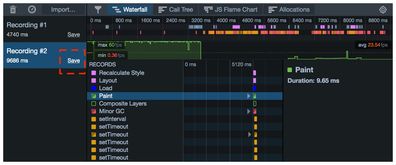Understanding Adsense

Google Adsense is a program that allows website owners and content creators to earn money by displaying ads on their websites. It’s a popular way to monetize online content, and with the right approach, it can be quite lucrative. If you’re looking to make money online through Adsense, here’s a detailed guide to help you get started.
Creating a Website or Blog

Before you can start earning money with Adsense, you need a platform to display the ads. This could be a website or a blog. Choose a niche that you are passionate about and that has a target audience. Make sure your website is well-designed, user-friendly, and optimized for search engines.
Applying for Adsense

Once you have your website or blog up and running, the next step is to apply for an Adsense account. Go to the Adsense website and fill out the application form. You will need to provide some basic information about your website, including its URL and the type of content it features. Google will review your application and notify you if you are approved.
Choosing the Right Ad Formats
Adsense offers a variety of ad formats, including text, image, video, and interactive ads. Choose the formats that best fit your website’s design and content. For instance, text ads are great for blogs, while image ads might work better for a photography website. Experiment with different formats to see which ones perform best with your audience.
Optimizing Your Ads
Once you have your ads set up, it’s important to optimize them for the best performance. This includes choosing the right ad sizes, placements, and colors. You should also consider the user experience and ensure that the ads are not intrusive or disruptive to your content.
Understanding the Adsense Payment Structure
Adsense pays you based on a cost-per-click (CPC) model. This means you earn money each time someone clicks on an ad on your website. The amount you earn per click can vary depending on the ad’s quality, the user’s location, and the advertiser’s budget. It’s important to understand this payment structure to set realistic expectations for your earnings.
Increasing Your Traffic
Your earnings will directly correlate with the amount of traffic your website receives. To increase your traffic, focus on creating high-quality, engaging content that appeals to your target audience. You can also use SEO strategies to improve your website’s visibility in search engine results. Social media marketing and networking with other bloggers can also help drive traffic to your site.
Using Analytics to Track Performance
Google Adsense provides detailed analytics that can help you track the performance of your ads. Use these tools to understand which ads are performing well, which ones are not, and how your audience interacts with your website. This information can help you make informed decisions about your ad placements and content strategy.
Complying with Adsense Policies
It’s crucial to comply with Adsense’s policies to maintain your account. This includes not clicking on your own ads, not encouraging others to click on them, and not using any deceptive practices to increase your earnings. Violating these policies can result in your account being suspended or terminated.
Expanding Your Earnings
As you become more experienced with Adsense, you can explore ways to expand your earnings. This might include diversifying your ad sources, experimenting with different ad networks, or even creating your own ad products. Remember to always focus on providing value to your audience and maintaining a high-quality website.
Table: Adsense Ad Formats
| Ad Format | Description | Best Use |
|---|---|---|
| Text Ads | Ads consisting of text and links. | Blogs, news websites, and content-heavy sites. |
| Image Ads | Ads that include images and text. | Photography websites, product review sites, and visually-oriented content. |
| Video Ads | Ads that play video content. | Video content platforms, entertainment websites, and educational sites. |
| Interactive Ads | Ads that allow users to
|




